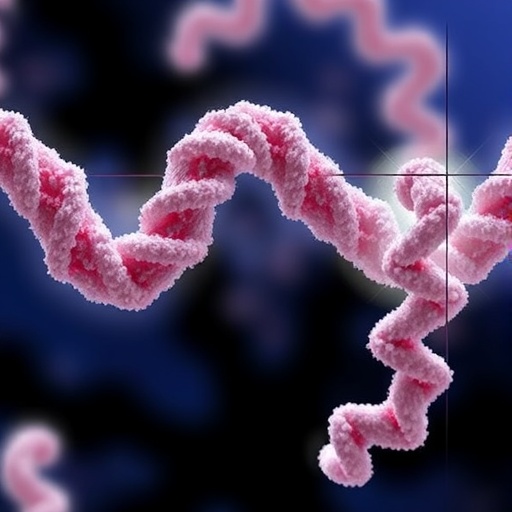
Credit: Photo: Delphine Duteil
The function and distribution of adipose tissue in the body change during the course of life. Beige fat cells, a special type of adipocytes, have the capability to use energy reserves – fatty deposits – by generating heat in a process known as thermogenesis. With increasing age, beige adipocytes take on the morphology of white adipocytes. Thermogenic activity ceases and with it the cells' ability to burn fat. As a result, the risk of obesity increases. A team working with Freiburg researchers Prof. Dr. Roland Schüle and Dr. Delphine Duteil has now proven that the epigenetic enzyme lysine specific demethylase 1 (Lsd1) plays a key role in this transformation. They are presenting their results in the science journal Proceedings of the National Academy of Sciences (PNAS).
The number of beige adipocytes decreases when Lsd1 levels fall in aging adipose tissue. The group nevertheless was able to maintain Lsd1 production specifically in fat cells, and thereby reducing age-related transformation of beige to white adipose tissue. In an experiment with mice, the amount of beige adipocytes in older animals was maintained at nearly the level corresponding to that of younger mice. Conversely, the research team also showed that loss of Lsd1 in younger animals led to premature transformation of the fat cells. To observe this, the researchers marked the beige adipocytes with a fluorescent protein and reproduced their transformation to white adipose tissue.
Beige fat cells can be generated using cold treatment, for example. These then use fatty acids to produce warmth. Body weight gain is limited as a result. The researchers demonstrated that Lsd1 is not only essential for the development of beige adipocytes, but also for the maintenance of beige fat cells. Therefore, an elevated Lsd1 level is indispensable for the efficient burning of calories.
The analyses showed furthermore that Lsd1 maintains beige adipocytes by means of the target gene Pparα. This gene is interesting from a therapeutic standpoint, because selective and effective drugs can activate or suppress it with relative ease. In their experiments, the team proved that pharmacological activation of Pparα is sufficient to hinder the premature loss of beige fat cells in mice with low levels of Lsd1. The animals were therefore protected from metabolic disorders that are caused by Lsd1 loss.
Roland Schüle and Delphine Duteil carry out their research at the Department of Urology and Clinical Research Center at the Freiburg University Medical Center. Schüle is a member of the cluster of excellence the BIOSS Centre for Biological Signalling Studies of the University of Freiburg.
###
Original publication: Delphine Duteil, Milica Tosic, Dominica Willmann, Anastasia Georgiadi, Toufike Kanouni, and Roland Schüle (2016). Lsd1 prevents age-programmed loss of beige adipocytes. PNAS. doi: 10.1073/pnas.1702641114
Read about Roland Schüle's research in "uni'wissen": http://www.pr2.uni-freiburg.de/publikationen/uniwissen/uniwissen-2014-1-en/#/8
Caption: Lsd1 placed on white adipocytes (red) prevents the aging of beige adipose tissue (yellow). Photo: Delphine Duteil
Contact:
Prof. Dr. Roland Schüle
Department of Urology and Clinical Research Center
Freiburg University Medical Center
BIOSS Centre for Biological Signalling Studies
Tel.: 0761/270-63100
E-Mail: [email protected]
Dr. Delphine Duteil
Clinical Research Center
Freiburg University Medical Center
Tel.: 0761/270-63390
E-Mail: [email protected]
Media Contact
Dr. Roland Schüle
[email protected]
49-761-270-63100
############
Story Source: Materials provided by Scienmag




